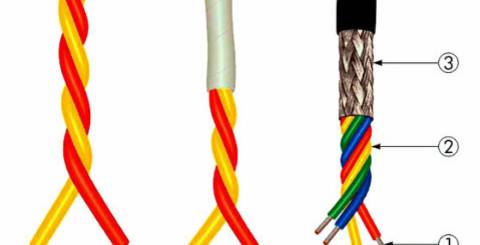Everything You Need to Know about Dielectric Strength of PTFE Sleeves

When it comes to high-performance materials for various industrial applications, PTFE (Polytetrafluoroethylene) stands out as a top choice. We are a top manufacturer of PTFE sleeves, and I often have to answer questions regarding how strong the dielectric properties are that come with PTFE sleeves.
In this post, I'll go into the details of the dielectric strength and why it is important in PTFE sleeves, and how our products compare on this crucial factor.
Understanding Dielectric Strength
Dielectric strength is an essential characteristic of materials that are insulating. It refers to the greatest electric field a substance can withstand without breaking or allowing electrical current to pass through it. When an electric force is applied to a material that is insulating its molecules are mildly polarized. But if the field is too strong, the material may suffer from dielectric breakdown. This can result in an abrupt, substantial increase in conductivity.
The dielectric strength is generally expressed as units of volts per inch (e.g., the volts per millimeter, or Kilovolts per centimeter). Higher dielectric strengths indicate that the material can endure the force of an electric field before disintegrating, which makes it a more effective insulator.
Why Dielectric Strength Matters for PTFE Sleeves
PTFE sleeves are widely used for electronic and electrical purposes because of their superior qualities for insulation. They're often used to shield cables, wires, as well as other electrical parts from interference with electrical currents, short circuits, and other environmental influences. When it comes to these types of applications, the dielectric strength and durability of PTFE sleeves are crucial for guaranteeing the security and stability of the electrical system.
As an example, in high-voltage applications like distribution and power transmission, PTFE sleeves with high dielectric strength are necessary for preventing electrical breakdowns and guaranteeing the correct functioning of the device. In electronic equipment, PTFE sleeves help to keep the integrity of electrical signals by preventing radiation currents from leaking and interference.
Dielectric Strength of PTFE
PTFE is renowned for its exceptional dielectric properties, including its strong dielectric strength. Dielectric properties of PTFE generally range from 10-30 kV/mm, dependent on variables such as the purity of the product as well as the manufacturing process as well as the thickness of the PTFE sleeves.
The strong dielectric properties of PTFE can be explained by the unique structure of its molecule. PTFE is a molecule made of fluorine and carbon Atoms that create solid and durable chemical bonds. The result is the formation of a non-polar, highly polarized molecule that can withstand the electromagnetic fields that can harm it. In addition, the fluorine molecules on the surface of the PTFE molecule form an inert and hydrophobic layer that further improves the insulation properties of the substance.
Factors Affecting the Dielectric Strength of PTFE Sleeves
Although PTFE provides a very high dielectric strength, a variety of factors could alter the dielectric strength of PTFE sleeves. This includes:
The purity of the material: The purity of the PTFE resin used to create the sleeves has a significant impact on the dielectric strength of the sleeves. The resin's impurities may act as sites of electric breakdown, which can reduce the dielectric strength in the materials.
Production process: Processes used in manufacturing may also impact the dielectric properties of PTFE sleeves. As an example, poor manufacturing conditions, like extreme heat or pressure, may cause cracks, voids, or other defects within the material that may weaken the dielectric power.
The thickness of the sleeves: Generally, thicker PTFE sleeves have higher dielectric resistance than those with less. This is because the electrical field is dispersed throughout a greater amount of material, thus reducing the chance of a breakdown.
Environmental conditions: Dielectric properties that are present in PTFE sleeves can also be affected by environmental conditions like humidity, temperature, and exposure to chemicals. The high temperatures and the humidity boost the conductivity of a material. Similarly, exposure to chemicals could cause degradation of PTFE's dielectric strength.
Our PTFE Sleeves and Dielectric Strength
As a manufacturer of PTFE sleeves, we are extremely careful to ensure that our products are of the most stringent standards in terms of efficiency and quality. We make use of only the highest quality plastics made of PTFE and utilize sophisticated manufacturing methods to make sleeves that are consistent and have stable dielectric properties.
Our PTFE sleeves come in various dimensions and thicknesses to satisfy the needs of our clients. We are also able to customize sleeves to meet specific specifications, for example, strong dielectric strength in high-voltage applications.
Apart from our typical PTFE sleeves, we also have a selection of machined PTFE components such as the PTFE Custom Rings, PTFE Bellows, and PTFE Seals. These components are engineered for excellent dielectric strength and thermal resistance, making them ideal for various electronic and electrical applications, especially when used alongside RF cable assemblies, where reliability and high-frequency performance are critical.
How to Choose the Right PTFE Sleeves for Your Application
In selecting PTFE sleeves for your application, you must consider the requirements for dielectric strength of the electrical system you are using. Also, you should consider other aspects, including operating temperature the humidity, humidity, as well as chemical environmental conditions.
Here are some suggestions to assist you in selecting the best PTFE sleeves:
Calculate the dielectric strength requirements: Consult with your electrical engineer or an experienced expert to establish the required dielectric strength that is required for the application you are considering. You should select PTFE sleeves that meet or exceed these specifications.
Think about the thickness: The thicker PTFE sleeves generally have higher dielectric strength. But it is important to take into consideration the size as well as the requirements for flexibility for your particular project.
Examine the manufacturing process: Look for PTFE sleeves that are produced using top-quality methods to guarantee consistent and solid dielectric properties.
Verify the environmental compatibility: Make sure the PTFE sleeves are compatible with the working temperature, humidity and the chemical conditions of the application.
Contact Us for Your PTFE Sleeve Needs
If you're in search of high-end PTFE sleeves with excellent dielectric properties, you're in the right place. We are a trusted provider of PTFE products. We possess the knowledge and expertise to provide you with the best solutions for all of your electronic and electrical applications.
If you require basic PTFE sleeves or custom-designed parts, we're able to assist. Our expert team is available to help you with choosing the best products and provide you with the highest quality support.
Whether you're designing compact electronic circuits or complex industrial automation systems, our range of wires & cables for electronics offers superior durability, insulation, and performance you can trust.
Similar Articles
More than an inconvenience, power cuts compromise work, comfort, and even safety at home. The solution? Buy a much-needed power backup device - an inverter!
Equipment like telescopes, satellites, and various industrial solutions are more sensitive to electrical interferences now, more than ever. In case of a power generator, telecommunication systems, or sophisticated manufacturing facilities, monitoring the direct current parameters is of utmost importance
Discover how to source high-quality, affordable LED downlights for commercial projects. Learn key factors like supplier reliability, customization, and cost-efficiency.
When most people think of industrial control panels, they picture factories, power plants, or maybe a water treatment facility. But these unsung heroes of automation and control are found in some of the most unexpected, and downright bizarre, places
Older homes often have hidden inefficiencies that increase energy bills and pose safety risks. Leaky windows, outdated insulation, and aging electrical systems can silently drive up costs while jeopardizing safety.
In extreme industrial settings, where temperature fluctuations, moisture, dust, and physical impact are constant challenges, traditional switches often fail to deliver long-term reliability. This is where piezo switches stand out, offering unmatched durability, resilience, and performance in the harshest conditions.
Have you ever thought about why your equipment shuts down randomly and flickers? The problem must be with the voltage fluctuation in the power supply.
Discover why spring-loaded pogo pins are essential in modern electronics, offering reliable, durable connections that boost performance in diverse applications.
Smart TVs have revolutionized the way we consume entertainment. With advanced technology and diverse functionalities, they have become a staple in modern homes. Among the numerous options available, an Android smart TV stands out for its unique features and flexibility, offering an immersive viewing experience









